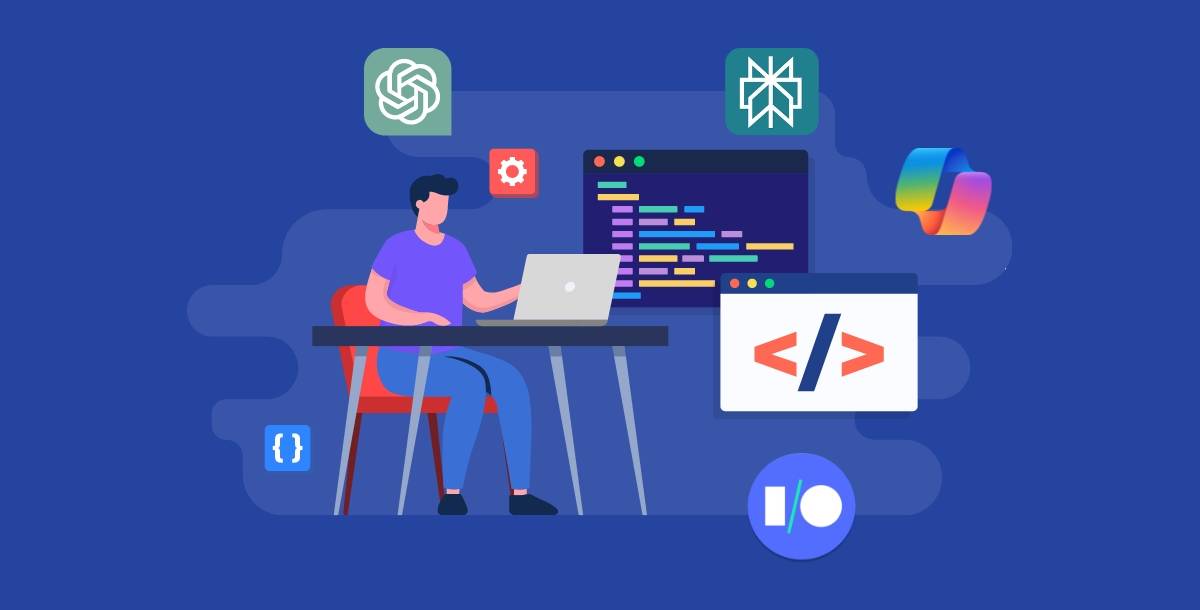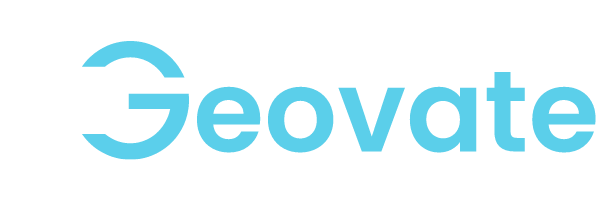What Gets Cited by ChatGPT, Perplexity, Google AIO & Copilot?
Wed,09 Jul 2025 13:03:00- Font Size
- Share Content

Why does this matter?
AI discovery engines have become the new gateways to information. If you’re still chasing Google rankings, you’re missing the bigger picture. ChatGPT, Perplexity, Google AIO, and Microsoft Copilot don’t optimize for traditional SEO. They prioritize data structure, tone, and source type. Understanding their citation patterns is essential for crafting content that gets noticed—and for driving success in both Answer engine optimization (AEO) Services and Generative Engine Optimization (GEO) Services campaigns.
What did we study?
We ran over 100 branded queries—identical prompts fed to each engine—covering product overviews, company backgrounds, and industry trends. Every time an AI agent provided an external reference, we logged the citation source. We then categorized citations into four buckets: institutional, user-generated content (UGC), structured data, and corporate reports. This systematic audit reveals which sources each engine trusts—and which ones it ignores.
What does ChatGPT cite most often?
ChatGPT’s citations skew heavily toward authoritative, encyclopedic sources. When you ask it about brands or concepts, look for references to:
- ✅ Wikipedia entries for foundational definitions
- ✅ Amazon product pages for specs and features
- ✅ Forbes, Wired, TechCrunch for business analysis
- ✅ G2 and Capterra for software reviews
- ✅ Research papers and domain-specific sites ending in .edu or .gov
These choices reflect OpenAI’s emphasis on reliability. ChatGPT defaults to sources that minimize hallucinations by sounding formal and well-structured.
Why does ChatGPT favor authority sources?
OpenAI tunes ChatGPT to avoid errors. By citing encyclopedic articles, academic papers, and respected media outlets, the model reduces the risk of fabricating facts. Authority sources also offer clear, consistent formatting—ideal for large language models to parse. When an answer begins with “According to Wikipedia…” or “A Forbes analysis states…,” users feel confident in its veracity.
How can you get cited by ChatGPT?
To boost your chances of being quoted:
- Write in a formal, confident tone, avoiding casual blog voice.
- Include entity definitions presented like a glossary.
- Add a TL;DR at the top using structured bullet points.
- Link out to high-authority external sources to reinforce credibility.
- Submit your product or company to G2, Crunchbase, and Product Hunt aggregators.
What does this mean for AEO and GEO Services?
Focusing on institutional citations helps both Answer Engine Optimization AEO and Generative Engine Optimization GEO Services. By securing mentions on Wikipedia and major publications, you build a citation footprint that ChatGPT consistently taps into. This, in turn, drives visibility and traffic from AI-powered discovery channels.
What does Perplexity cite most often?
Perplexity’s results feel like a social media feed—it cites real-world voices and experiences:
- ✅ Reddit threads capturing community debates
- ✅ YouTube comments for user opinions
- ✅ Quora and StackOverflow for Q&A insights
- ✅ Twitter (X) posts for breaking commentary
- ✅ LinkedIn discussions for professional perspectives
- ✅ Blog posts rich in first-person anecdotes
Perplexity integrates UGC to mimic conversational exploration rather than formal reporting.
Why does Perplexity favor UGC?
Perplexity’s design emphasizes breadth over formal authority. By surfacing user stories, forum threads, and social commentary, it offers a more nuanced, ground-level view. This approach resonates with readers seeking candid experiences rather than polished analysis.
How can you get cited by Perplexity?
To capture Perplexity’s attention:
- Seed UGC about your product on Reddit, X, and LinkedIn.
- Encourage genuine reviews and public feedback on social channels.
- Write first-person, story-driven blog posts so they read like personal accounts.
- Include dates, stats, and anecdotes to give answers authenticity.
- Craft titles that echo Quora-style questions and answers.
What does this mean for AEO and GEO Services?
Incorporating UGC into your overall plan balances institutional credibility with conversational appeal. For Generative Engine Optimization (GEO) Services—where AI thrives on real voices—active community engagement is nonnegotiable.
What does Google AIO cite most often?
Google’s AI Overviews blend every content type but couch them in strict technical requirements. The engine’s citations prioritize:
- ✅ Pages with FAQPage and HowTo schema
- ✅ Clean semantic HTML with minimal JavaScript wrappers
- ✅ Well-tagged paragraph elements beneath matching headings
- ✅ Structured data that machines can parse without guesswork
Google AIO doesn’t care much about authority—it cares about markup clarity and accessibility.
Why does Google AIO value structure over authority?
Google’s AI models extract content directly from the DOM. Clear schema markup (JSON-LD) signals exact answer blocks. Proper heading hierarchies guide the extractor to the correct text. By emphasizing structure, Google AIO ensures brevity and relevance over brand prestige.
How can you get cited by Google AIO?
To optimize for Google AIO:
- Implement FAQPage and HowTo schema on relevant pages.
- Write answers under 100 words for quick extraction.
- Use clean HTML, avoiding JS-rendered content.
- Place key terms in heading tags and blod tags.
- Keep styling simple to preserve accessibility.
What does this mean for AEO and GEO Services?
For Answer Engine Optimization (AEO) Services, technical precision is paramount. Every FAQ and How-To section must be schema-marked and kept under 100 words for quick extraction. From a Generative Engine Optimization (GEO) Services perspective, blending structured data with clear, concise prose ensures your content surfaces in AI-driven summaries. In practice, you should audit all key pages for schema compliance, streamline your HTML, and prioritize accessibility to maximize citations by Google AIO.
What does Microsoft Copilot cite most often?
Copilot acts like an enterprise research assistant. Its citations skew toward corporate knowledge repositories:
- ✅ Gartner and other analyst reports
- ✅ Whitepapers and executive summaries
- ✅ Official documentation hosted on company domains
- ✅ LinkedIn thought-leadership articles
- ✅ PDF case studies detailing client results
Copilot is built to serve professionals who demand depth and rigor over casual commentary.
Why does Copilot prefer enterprise documents?
Microsoft tunes Copilot for B2B environments. By referencing whitepapers and reports, it ensures the information is backed by comprehensive research and vetted by domain experts. PDFs and executive summaries carry a formal weight that aligns with enterprise decision-making.
How can you win citations in Copilot?
To capture Copilot’s citations:
- Publish downloadable PDFs with embedded data tables and graphs.
- Include client success metrics and detailed statistics.
- Use B2B language like “workflow automation” and “compliance”.
- Craft long-form case studies but lead with key insights.
- Syndicate content on SlideShare and enterprise forums.
What does this mean for AEO and GEO Services?
In AEO Services, it’s crucial to surface your enterprise documentation in machine-readable formats—PDFs with embedded metadata and clear headings. From the GEO Services standpoint, creating robust whitepapers and case studies tailored to corporate audiences positions you for Copilot citations. To implement this, publish executive summaries as downloadable PDFs, embed structured data where possible, and syndicate your research on SlideShare and industry forums to secure your spot in Copilot’s enterprise-focused recommendations.
Is there a universal rule for citation across AI engines?
No single strategy works for every AI agent. Each engine values distinct content attributes, which is why Generative Engine Optimization (GEO) Services advocates tailor-made approaches. The table below summarizes the core preferences:
Engine Values Most Format Priority
ChatGPT Institutional trust Paragraphs with authority
Perplexity User experience, conversation UGC and stories
Google AIO Semantic markup + clarity Schema, FAQ, HTML tags
Microsoft Copilot Enterprise-grade documentation PDFs, case studies
How can you discover where your brand shows up?
We offer a free GEO + AEO audit that runs your domain through all four engines. You’ll receive:
- A report on where you’re cited by each engine
- A list of queries where you’re ignored
- Customized recommendations on what to change
Get a Free GEO + AEO Audit »
Frequently Asked Questions(FAQs)
Q1. What is the difference between Answer Engine Optimization (AEO) and Generative Engine Optimization (GEO)?
A. AEO focuses on structuring content—using schema markup, clear headings, and concise answers—to satisfy AI discovery engines like Google AIO. GEO tailors content to each engine’s citation preferences (institutional sources for ChatGPT, UGC for Perplexity, whitepapers for Copilot). Together, AEO Services and GEO Services ensure maximum visibility across all AI platforms.
Q2. How can I optimize my site to get cited by ChatGPT?
A. To attract ChatGPT citations, emphasize authority: maintain accurate Wikipedia pages, secure mentions in major publications, and submit to aggregators like G2. Use a formal tone, include glossary-style definitions, add TL;DR bullet sections, and link to high-authority external sources. These tactics align with best practices for AEO Services.
Q3. What strategies help Perplexity cite my content?
A. Perplexity values real-world voices. Seed user-generated content by encouraging Reddit threads, LinkedIn discussions, and Quora answers. Write in a first-person, story-driven style, include dates and statistics, and craft titles that mimic question-and-answer formats. Active community engagement is key for effective GEO Services on Perplexity.
Q4. Which technical steps are essential for Google AIO citations?
A. Google AIO requires clean, semantic HTML and schema markup. Implement FAQPage and HowTo schema, keep answer paragraphs under 100 words, use proper heading and blod tags for key terms, and avoid JavaScript-wrapped content. These measures form the backbone of any successful AEO Services initiative.
Q5. What content formats does Microsoft Copilot prefer?
A. Copilot favors enterprise-grade documentation: Gartner reports, whitepapers, PDF case studies, and official docs. Publish downloadable PDFs with embedded data tables, use B2B language (e.g., “workflow automation”), highlight client results, and syndicate on SlideShare. These long-form research pieces drive citations under a GEO Services strategy.
